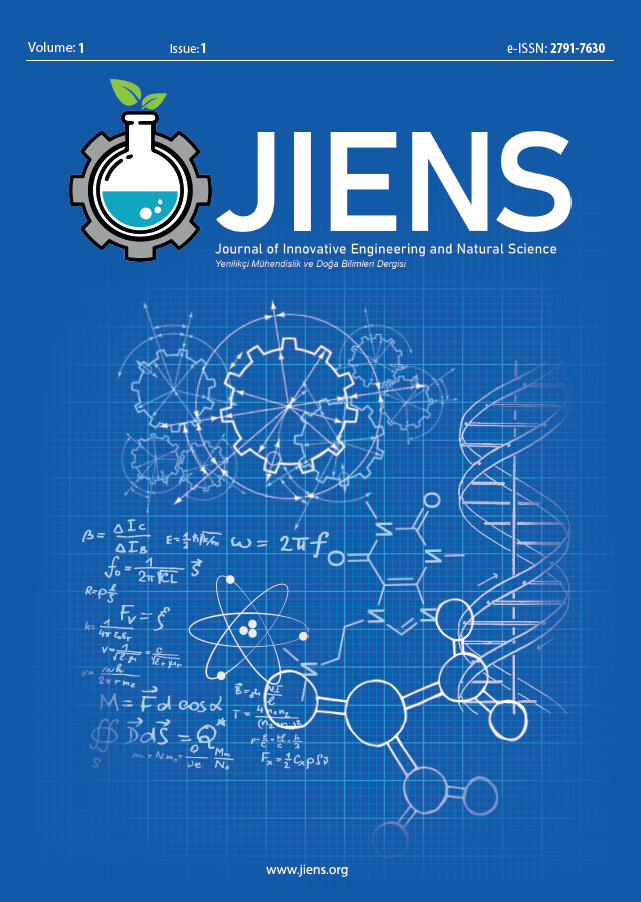Author :
Abstract
In this study, the water quality of the Samanlı and Safran Rivers, passing through Yalova Province, were examined in terms of physicochemical parameters, alkalinity and content of inorganic nutrients (nitrate, nitrite, phosphate). The sampling from five station located on the Samanlı and Safran Rivers was performed for fiftythree weeks. Linear and nonlinear Models were applied by the aid of Matlab, Microsoft Excel programs and Multiple Linear Regression Model. The predictions were performed for the samples collected from other points beyond the rivers, and it was shown that the model predicts well the parameters with low error. As a result, it was determined that the linear models predicted the value of parameters for next 8 months. Nonlinear models predict well at least eight months values. Additionally, it was determined that the models work well especially for the samples collected from fresh water.
Keywords
Abstract
In this study, the water quality of the Samanlı and Safran Rivers, passing through Yalova Province, were examined in terms of physicochemical parameters, alkalinity and content of inorganic nutrients (nitrate, nitrite, phosphate). The sampling from five station located on the Samanlı and Safran Rivers was performed for fiftythree weeks. Linear and nonlinear Models were applied by the aid of Matlab, Microsoft Excel programs and Multiple Linear Regression Model. The predictions were performed for the samples collected from other points beyond the rivers, and it was shown that the model predicts well the parameters with low error. As a result, it was determined that the linear models predicted the value of parameters for next 8 months. Nonlinear models predict well at least eight months values. Additionally, it was determined that the models work well especially for the samples collected from fresh water.
Keywords
- [1] Singh KP, Malik A, S. Sinha S (2005) Water quality assessment and apportionment of pollution sources of Gomti river (India) using multivariate statistical techniques - A case study. Anal Chim Acta 538:355– 374. https://doi.org/10.1016/j.aca.2005.02.006
- [2] Shrestha S, Kazama F (2007) Assessment of surface water quality using multivariate statistical techniques: A case study of the Fuji river basin, Japan. Environ Model Softw 22:464–475. https://doi.org/10.1016/j.envsoft.2006.02.001
- [3] Singh KP, Malik A, Mohan D, Sinha S (2004) Multivariate statistical techniques for the evaluation of spatial and temporal variations in water quality of Gomti River (India) - A case study. Water Res 38: 3980–3992. https://doi.org/10.1016/j.watres.2004.06.011
- [4] Nguyen TH, Helm B, Hettiarachchi H, Caucci S, Krebs P (2019) The selection of design methods for river water quality monitoring networks : a review. Environ Earth Sci 78:1–17. https://doi.org/10.1007/s12665-019-8110-x
- [5] Villas-boas MD, Olivera F, De Azevedo JPS (2017) Assessment of the water quality monitoring network of the Piabanha River experimental watersheds in Rio de Janeiro, Brazil, using autoassociative neural networks. Environ Monit Assess 189: 439. https://doi.org/10.1007/s10661-017-6134-9
- [6] Mccaffrey S (2012) Water quality parameters & indicator. https://sswm.info/node/4300 Accessed 15 June 2021
- [7] Yang G, Moyer DL (2020) Estimation of nonlinear water-quality trends in high-frequency monitoring data. Sci Total Environ 715:136686. https://doi.org/10.1016/j.scitotenv.2020.136686
- [8] Juntunen P, Liukkonen M, Pelo M, Lehtola MJ, Hiltunen Y (2012) Modelling of water quality: an application to a water treatment process. Appl Comput Intell Soft Comput 2012:1–9. https://doi.org/10.1155/2012/846321
- [9] Maqbool F, Malik AH, Bhatti ZA, Pervez A, Suleman M (2012) Application of regression model on stream water quality parameters. Pakistan J Agric Sci vol. 49:95–100
- [10] El-Korashey R (2009) Using regression analysis to estimate water quality constituents in Bahr El Baqar drain. J Appl Sci Res 5:1067–1076
- [11] Mustapha A, Abdu A (2012) Application of principal component analysis & multiple regression models in surface water quality assessment. J Environ Earth Sci 2:16–23
- [12] Majeed SAAD, Saleh LAM, Aswed GK (2018) Modeling the water quality index and climate variables using an artificial neural network and non-linear regression. Int J Eng Technol 7:1346–1350. https://doi.org/10.14419/ijet.v7i3.9519
- [13] Yalova Çevre ve Şehircilik İl Müdürlüğü (2016) Yalova İli 2015 yılı çevre durum raporu. [Online]. Available: https://yalova.csb.gov.tr/
- [14] U.S. Environmental Protection Agency (1982) Method 150.2: pH, continuous monitoring (electrometric) by pH meter. [Online]. Available: www.epa.gov
- [15] U.S. Environmental Protection Agency (1982) Method 120.1 : Conductance (specific conductance, µmhos at 25 °C ) by conductivity meter
- [16] U.S. Environmental Protection Agency (1971) Method 360.1 Oxygen, dissolved (membrane electrode).
- [17] U.S. Environmental Protection Agency (1978) Alkalinity (titrimetric, pH 4.5).
- [18] U.S. Environmental Protection Agency (1971) Residue, non-filterable (gravimetric, dried at 103-105°C).
- [19] U.S. Environmental Protection Agency (1974) Nitrogen, nitrate-nitrite (spectrophotometric, cadmium reduction).
- [20] U.S. Environmental Protection Agency (1978) Method 365.3: Phosphorous, all forms (colorimetric, ascorbic acid, two reagent).
- [21] Amini H, Taghavi-Shahri SM, Henderson SB, Naddafi K, Nabizadeh R, Yunesian M (2014) Land use regression models to estimate the annual and seasonal spatial variability of sulfur dioxide and particulate matter in Tehran, Iran. Sci Total Environ 488–489: 343–353. https://doi.org/10.1016/j.scitotenv.2014.04.106
- [22] More AG, Gupta SK (2018) Predictive modelling of chromium removal using multiple linear and nonlinear regression with special emphasis on operating parameters of bioelectrochemical reactor. J Biosci Bioeng 126:205–212. https://doi.org/10.1016/j.jbiosc.2018.02.013
- [23] Ramesh N, Ramesh S, Vennila G, Abdul Bari J, MageshKumar P (2016) Energy production through organic fraction of municipal solid waste—A multiple regression modeling approach. Ecotoxicol Environ Saf 134:350–357. https://doi.org/10.1016/j.ecoenv.2015.08.027
- [24] Kicsiny R (2018) Black-box model for solar storage tanks based on multiple linear regression. Renew Energy 125:857–865. https://doi.org/10.1016/j.renene.2018.02.037
- [25] Salem S, Berends D, Heijnen JJ, Van Loosdrecht MCM (2002) Model-based evaluation of a new upgrading concept for N-removal. Water Sci Technol 45:169–176. https://doi.org/10.2166/wst.2002.0104
